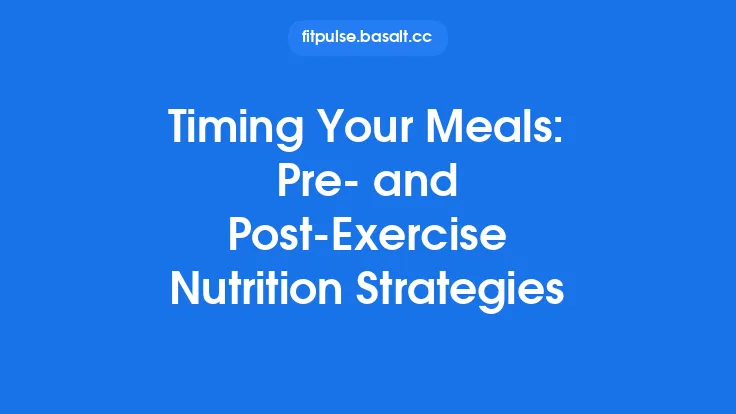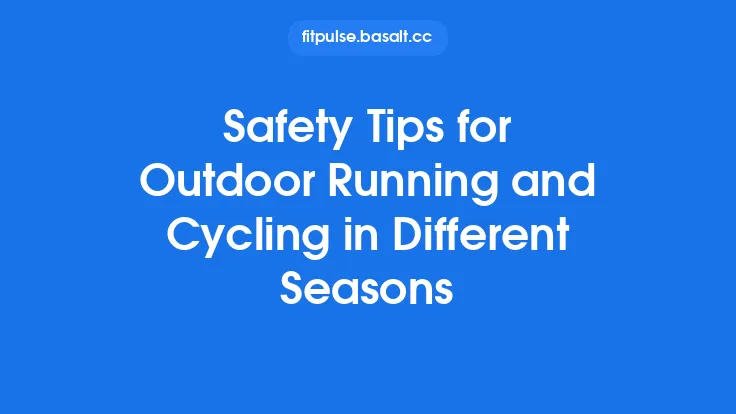Long-distance cycling, whether it’s a 100‑km training ride, a 180‑km bike leg in an Olympic‑distance triathlon, or a full Ironman bike segment, places unique and sustained demands on the body’s energy systems. Unlike short, high‑intensity efforts that rely heavily on phosphocreatine and anaerobic glycolysis, endurance rides draw primarily on aerobic metabolism, requiring a steady supply of carbohydrates, fats, and, to a lesser extent, protein. The challenge for triathletes is to deliver that fuel efficiently while staying hydrated, maintaining gastrointestinal comfort, and preserving performance for the subsequent run. This article provides an evergreen, science‑backed framework for planning, testing, and executing nutrition strategies that keep you powered from the start line to the finish.
Understanding Energy Demands of Long‑Distance Cycling
- Aerobic Energy Contribution
- At moderate intensities (≈55–75 % of VO₂max), the body oxidizes roughly 60–70 % of its energy from carbohydrates and the remainder from fats.
- As intensity rises toward the lactate threshold (≈80–85 % of VO₂max), carbohydrate oxidation can exceed 85 % because fats become less efficient at higher rates of ATP production.
- Caloric Expenditure Estimates
- A 70 kg rider at 25 km/h on flat terrain typically burns ~600–700 kcal per hour.
- Adding climbs, wind, or higher speeds can push this to >900 kcal/h.
- Knowing your personal burn rate (via power meters, heart rate zones, or metabolic testing) is the first step to matching intake.
- Glycogen Stores and Depletion
- Muscle glycogen stores average 300–400 g (≈1,200–1,600 kcal) for a well‑fed athlete.
- Liver glycogen adds another 80–100 g (≈320–400 kcal).
- Without exogenous carbohydrate, glycogen can be depleted after 2–3 h of continuous effort, leading to a dramatic drop in power output (“bonk”).
Macronutrient Fundamentals
| Nutrient | Primary Role on the Bike | Typical Intake for Endurance Rides |
|---|---|---|
| Carbohydrates | Rapid ATP production; maintains blood glucose; spares muscle glycogen | 30–60 g · h⁻¹ (moderate) up to 90 g · h⁻¹ (high‑intensity) |
| Proteins | Supports muscle repair, mitigates catabolism, aids immune function | 0.2–0.3 g · kg⁻¹ · h⁻¹ (≈10–15 g · h⁻¹) |
| Fats | Provides a high‑energy, low‑volume fuel for low‑to‑moderate intensities | 0.5–1.0 g · kg⁻¹ · h⁻¹ (≈30–70 g · h⁻¹) |
Balancing these macronutrients throughout a ride ensures a steady energy supply while minimizing gastrointestinal distress.
Carbohydrate Timing and Types
- Pre‑Ride Loading (2–4 h before start)
- Aim for a meal containing 1–2 g · kg⁻¹ of carbohydrate, low in fiber and fat to promote rapid gastric emptying.
- Example: 80 g of oatmeal with a banana and a small amount of honey.
- During‑Ride Carbohydrate Delivery
- Rate: 30–60 g · h⁻¹ is sufficient for most rides; elite athletes may push to 90 g · h⁻¹ using multiple transportable carbs.
- Transportable Carbohydrate Blends: Combine glucose (or maltodextrin) with fructose in a 2:1 ratio. This exploits separate intestinal transporters (SGLT1 for glucose, GLUT5 for fructose), allowing up to ~1.2 g · min⁻¹ absorption.
- Form: Gels, chews, sports drinks, and low‑fiber bars are all viable; choose based on personal tolerance and convenience.
- Post‑Ride Carbohydrate Replenishment
- Within 30 min, ingest 1.0–1.2 g · kg⁻¹ of carbohydrate to maximize glycogen resynthesis, especially if the run follows shortly.
Protein for Recovery and Muscle Preservation
- Why It Matters: Even during steady‑state cycling, a modest amount of muscle protein breakdown occurs. Providing exogenous amino acids blunts catabolism and primes the body for the subsequent run.
- Optimal Dose: 0.2–0.3 g · kg⁻¹ of high‑quality protein per hour (e.g., whey isolate, soy, or a blend of essential amino acids).
- Timing: Consuming protein every 2–3 h during ultra‑long rides (≥4 h) or immediately after the bike leg improves recovery markers.
- Practical Sources: Protein‑enriched gels, fortified sports drinks, or small portions of nut butter mixed with carbohydrate gels.
Fats as a Sustainable Fuel Source
- Role in Endurance: At intensities below ~65 % VO₂max, fat oxidation can supply >60 % of total energy, sparing glycogen.
- Practical Implementation:
- Pre‑Ride: Include a modest amount of healthy fats (e.g., avocado, nuts) 2–3 h before the start to avoid gastric upset.
- During Ride: Fat intake is generally unnecessary for rides under 3 h, but for ultra‑distance events (>5 h) a small amount of medium‑chain triglyceride (MCT) oil (≈5 g per hour) can provide a quick‑oxidizing fat source without overwhelming the digestive system.
- Caution: High‑fat foods are slower to digest and can cause GI distress if consumed too close to the start.
Hydration Strategies and Electrolyte Balance
- Fluid Volume
- Aim for 400–800 ml · h⁻¹, adjusting for temperature, humidity, and sweat rate.
- Weigh yourself pre‑ and post‑ride (naked) to estimate sweat loss: a 1 kg loss ≈ 1 L of fluid.
- Electrolytes
- Sodium is the primary electrolyte lost in sweat (≈500–1,200 mg · L⁻¹).
- Target 300–600 mg · L⁻¹ of sodium in your drink or via salty foods (e.g., pretzels, salted nuts).
- Include potassium (≈200–300 mg · L⁻¹) and magnesium (≈30–50 mg · L⁻¹) for muscle function.
- Temperature Considerations
- In hot conditions, prioritize sodium‑rich fluids and consider adding a small amount of carbohydrate to maintain energy.
- In cold weather, fluid needs drop, but electrolyte intake remains essential; use warm drinks or soups to maintain core temperature.
Practical Meal Planning for Training and Race Days
| Time | Example Meal/Snack | Rationale |
|---|---|---|
| Night Before | 70 g carbohydrate (pasta), 20 g protein (chicken), low‑fat veg | Maximizes glycogen stores without excess fat |
| 2–3 h Pre‑Ride | 80 g carbohydrate (oatmeal + banana + honey), 10 g protein (Greek yogurt) | Provides readily available glucose, minimal fiber |
| During Ride (Every 30 min) | 30 g carbohydrate (gel + water) + 5 g protein (protein‑enriched gel) | Sustains blood glucose, supports muscle maintenance |
| Every 60 min (Optional) | 15 g fat (handful of almonds) | Adds satiety and a small extra energy source |
| Immediately Post‑Bike | 1 g · kg⁻¹ carbohydrate + 0.3 g · kg⁻¹ protein (recovery shake) | Rapid glycogen replenishment, initiates repair |
| During Run (if applicable) | 30–45 g carbohydrate per hour (sports drink or chews) | Prevents dip in blood glucose during run |
Adjust portion sizes based on body weight, intensity, and personal tolerance.
Supplementation: When and What to Use
| Supplement | Evidence‑Based Use | Typical Dose |
|---|---|---|
| Caffeine | Improves perceived effort and endurance; best taken 30 min before or during ride | 3–6 mg · kg⁻¹ (≈200–400 mg) split into 2 doses |
| Beta‑Alanine | Buffers muscle acidity; more relevant for high‑intensity intervals than steady rides | 2–5 g · day⁻¹ (loading phase) |
| Sodium Bicarbonate | Enhances buffering for short, high‑intensity bursts; not essential for long steady rides | 0.2–0.3 g · kg⁻¹ (taken 60 min before) |
| Electrolyte Capsules | Convenient for high‑sweat conditions; avoid over‑consumption | 300–500 mg sodium per capsule, taken every 45 min |
| MCT Oil | Quick‑oxidizing fat source for ultra‑endurance; may cause GI upset in some | 5–10 g · h⁻¹, mixed into drink |
| Probiotics | May improve gut tolerance to high‑carb intake; long‑term use | Strain‑specific, follow manufacturer guidelines |
Supplementation should be trialed in training, never for the first time on race day.
Sample Nutrition Plans for Different Distances
1. 80‑km (≈2 h) Bike Leg – Olympic Distance
- Pre‑Ride (2 h): 70 g carbohydrate (bagel + jam), 10 g protein (low‑fat cheese).
- During Ride: 30 g carbohydrate per hour (one gel + 250 ml water).
- Hydration: 500 ml water + 250 ml sports drink (≈300 mg sodium).
- Post‑Bike (within 30 min): 30 g carbohydrate + 10 g protein (recovery shake).
2. 180‑km (≈5 h) Bike Leg – Half‑Ironman
- Pre‑Ride (3 h): 100 g carbohydrate (pasta with tomato sauce), 15 g protein (lean turkey).
- During Ride:
- Every 30 min: 30 g carbohydrate (gel + water).
- Every 60 min: 5 g protein (protein‑enriched gel).
- Every 90 min: 15 g fat (handful of almonds).
- Hydration: 750 ml water + 750 ml electrolyte drink (≈500 mg sodium total).
- Post‑Bike: 1 g · kg⁻¹ carbohydrate + 0.3 g · kg⁻¹ protein (shake + banana).
3. 180‑km (≈5 h) Bike Leg – Full Ironman
- Pre‑Ride (4 h): 120 g carbohydrate (sweet potato + rice), 20 g protein (egg whites).
- During Ride:
- 30 g carbohydrate + 5 g protein every 30 min (dual‑purpose gel).
- 5 g MCT oil mixed into drink every hour (optional).
- 300 mg sodium per hour via electrolyte tablets.
- Hydration: 1 L water + 1 L electrolyte drink per 2 h.
- Post‑Bike: 1.2 g · kg⁻¹ carbohydrate + 0.4 g · kg⁻¹ protein (recovery smoothie with fruit, whey, and oat milk).
These templates are starting points; fine‑tune based on sweat rate, gut comfort, and race conditions.
Adapting Nutrition to Environmental Conditions
| Condition | Adjustment |
|---|---|
| Heat (>30 °C) | Increase fluid volume by 20–30 %; raise sodium to 600–800 mg · L⁻¹; consider cooler, isotonic drinks; add a small amount of extra carbohydrate (up to 10 g · h⁻¹) to offset higher metabolic cost. |
| Cold (<5 °C) | Reduce fluid volume slightly (avoid over‑hydration); keep drinks warm to maintain core temperature; maintain sodium intake (300–500 mg · L⁻¹) to prevent hyponatremia. |
| Altitude (>2,000 m) | Slightly increase carbohydrate intake (10–15 % more) due to higher ventilation rates; monitor hydration closely as respiratory water loss rises. |
| Windy/Headwind | Anticipate higher power output; add 5–10 g · h⁻¹ carbohydrate and consider a small extra protein dose for muscle protection. |
Common Pitfalls and How to Avoid Them
- “All‑Or‑Nothing” Carb Loading
- Overeating high‑glycemic carbs the night before can cause GI upset. Opt for a balanced meal with moderate carbs and low fat/fiber.
- Inadequate Sodium Leading to Hyponatremia
- Drinking large volumes of plain water without electrolytes dilutes blood sodium. Use sports drinks or add salt tablets.
- Relying on a Single Carb Source
- Glucose‑only feeds saturate at ~60 g · h⁻¹. Incorporate fructose (or maltodextrin) to boost absorption.
- Skipping Protein During Ultra‑Endurance Rides
- Even modest protein (5–10 g per hour) improves muscle protein balance and reduces post‑ride soreness.
- Testing New Foods on Race Day
- Always trial gels, bars, and drinks during long training rides to assess tolerance.
- Neglecting Post‑Ride Nutrition
- Delayed carbohydrate and protein intake impairs glycogen restoration and prolongs recovery, compromising the run.
Testing and Fine‑Tuning Your Nutrition Strategy
- Laboratory or Field Metabolic Testing
- Determine your VO₂max, lactate threshold, and carbohydrate oxidation capacity. This informs the optimal carb intake rate.
- Sweat Rate Assessment
- Weigh before and after a 1‑hour ride (naked, no fluid intake). The weight loss plus fluid consumed equals sweat loss.
- Gut Tolerance Trials
- During a training ride that matches race duration, experiment with different gel flavors, textures, and timing. Record any GI symptoms.
- Power Output Monitoring
- Track whether performance dips correlate with nutrition lapses (e.g., missed carb feed). Adjust timing accordingly.
- Recovery Metrics
- Use heart‑rate variability (HRV) or perceived soreness scores to gauge how well your post‑ride nutrition supports recovery.
- Iterative Adjustments
- Make one change at a time (e.g., increase carb rate from 60 g · h⁻¹ to 70 g · h⁻¹) and evaluate the effect before adding another variable.
Bottom Line
Fueling long‑distance bike legs in triathlon is a blend of science and personal experimentation. By understanding the energy systems at play, matching carbohydrate delivery to your intensity, incorporating modest protein and strategic fats, and maintaining precise hydration and electrolyte balance, you can sustain power output, protect muscle tissue, and arrive at the transition zone ready to run. Remember that the most reliable plan is the one you have practiced repeatedly under conditions that mimic race day. Use the guidelines above as a foundation, test them in training, and refine until the nutrition strategy feels as natural as the cadence of your pedals.





